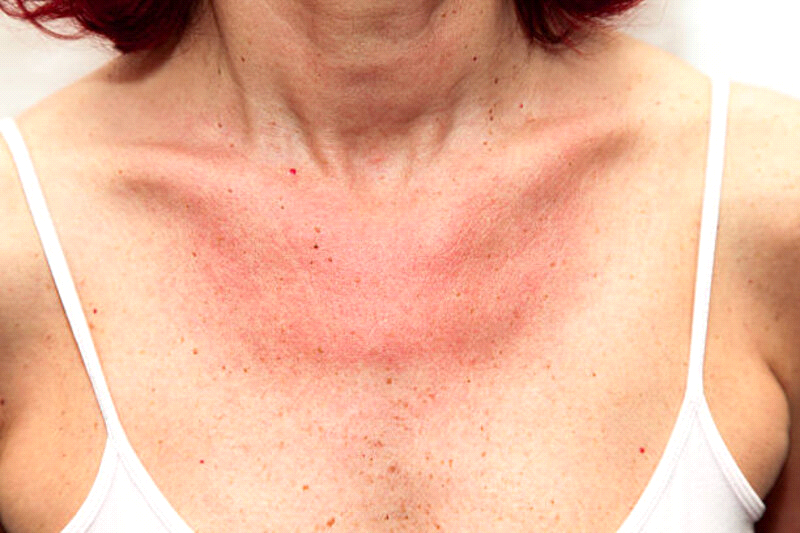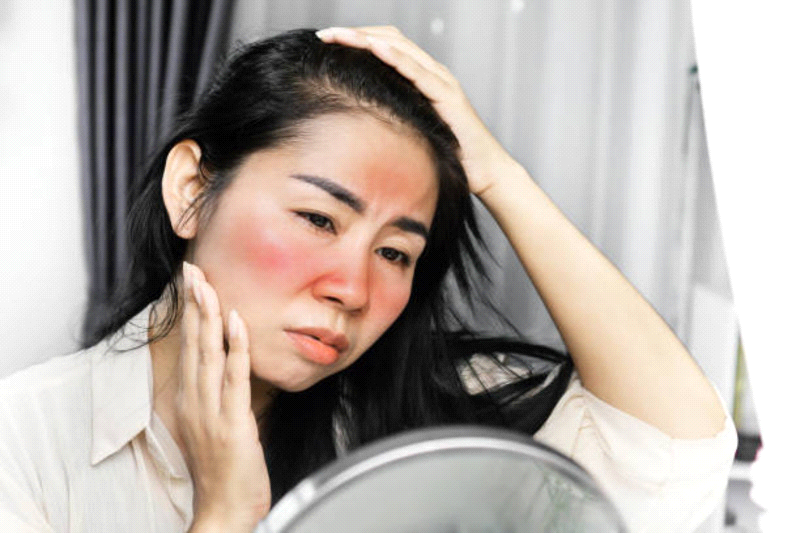If you’ve ever experienced a reaction to sunlight, then you know that the discomfort of sun allergies can be severe. From itchy rashes and hives to painful blisters, sun allergies can make spending time in the outdoors far from enjoyable – especially throughout those bright summer days when your friends are outside enjoying everything that the season has to offer! But what causes these reactions? How do we protect ourselves against irritation when out in the sunshine? In this comprehensive guide, we’ll help you understand and manage all things related to sun allergies, so that you feel comfortable exploring sunny outdoor spots again with friends and family.
What is sun allergy?

A sun allergy, sometimes known as a photosensitivity disorder, is an immune system reaction to the sunlight that can cause skin inflammation and sensitivity. Generally, it’s caused by an over-reactive response of the body's immune system to certain substances when exposed to the sun. When UV rays come into contact with your skin, they trigger a reaction in substances such as fragrances, antibiotics and skin care products. This causes a release of inflammatory chemicals such as histamine, which can lead to skin rashes or hives.
What are the symptoms associated with it?
Common symptoms of a sun allergy can include redness, itching, dry patches of skin, hives or blisters. These may develop on the parts of your body that are most exposed to sunlight such as face, ears, and shoulders. Another common symptom is a rash known as polymorphous light eruption (PMLE).
This typically appears several hours after you’ve been exposed to the sun and may start as small, itchy bumps that can eventually develop into large red patches or blisters. Sun allergies can also cause a sudden feeling of heat with an accompanying flush of the skin. Other symptoms such as
- Eye irritation
- Headache
- Nausea
- Dizziness
- Fatigue
Types of Sun Allergies
There are three main types of sun allergies that you should be aware of:
- Polymorphous Light Eruption (PMLE): This type of sun allergy is the most common and usually results in an itchy rash that is red or brown in color. It typically appears several hours after exposure to the sun, but can also occur at any time of year.
- Solar Urticaria: Solar Urticaria is a rare form of sun allergy which results in the development of hives or welts within minutes after exposure to ultraviolet light.
- Actinic Prurigo: This type of sun allergy often results in itchy bumps that can develop into blisters if scratched. It usually affects young children and adults with dark skin and tends to be more severe in warmer climates.
How to Prevent and Manage Sun Allergies?

The best way to prevent and manage sun allergies is to protect your skin from the sun’s UV rays. This means wearing protective clothing such as wide-brimmed hats, sunglasses, long sleeves, and pants whenever you are outside. You should also use sunscreen with an SPF of 30 or higher and reapply it every two hours.
Avoid using fragrances or skin care products that may cause a reaction when exposed to the sun.
Take medications as prescribed by your doctor to help manage any inflammation or itching associated with the allergy.
If you experience any symptoms of a sun allergy, seek medical attention right away.
How to treat existing sun allergies?
If you already have a sun allergy, there are several treatments available to help manage your condition. These range from topical creams such as hydrocortisone or calamine lotion to oral medications such as antihistamines and corticosteroids. Your doctor may also recommend phototherapy, which involves exposing the skin to controlled amounts of UV light to desensitize it to the sun’s rays.
Natural remedies that can help alleviate symptoms:
- Aloe Vera: Using aloe vera topically can help soothe irritated skin, reduce redness, and serve as an anti-inflammatory agent.
- Baking Soda: Adding baking soda to your bath water can help reduce inflammation associated with sun allergies.
- Oatmeal: Adding oatmeal to a warm bath can help soothe irritated skin and provide some relief from itching.
- Chamomile Tea: Drinking chamomile tea or soaking in it can help reduce inflammation and provide soothing relief for symptoms of sun allergies.
- Apple Cider Vinegar: Applying apple cider vinegar to the affected area can help reduce redness, itching, and inflammation associated with sun allergies.
- Tea Tree Oil: Using a few drops of tea tree oil mixed with a carrier oil and applying it to your skin may help reduce inflammation and provide relief from discomfort caused by sun allergies.
- Vitamin D Supplementation: Taking a vitamin D supplement may help reduce inflammation and improve the skin’s ability to tolerate UV light.
Conclusion:
Sun allergies can be uncomfortable and inconvenient, but with the right precautions and treatments they can be managed. Staying out of direct sunlight when possible and using protective clothing is essential for preventing sun allergies. Topical creams, oral medications, phototherapy, dietary supplements, and natural remedies may all be beneficial in managing your condition. If your symptoms persist or become worse, consult a doctor for further advice and treatment.




